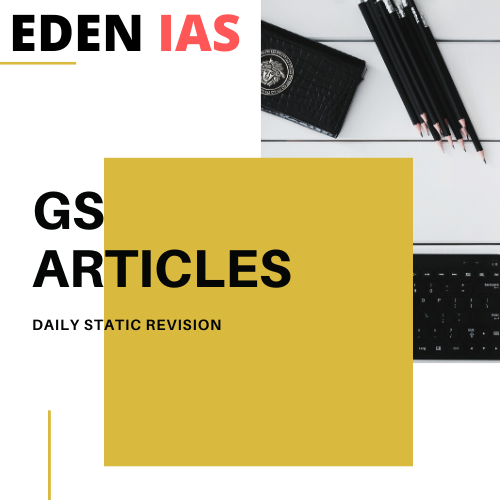
EDEN BLOGS
RIGHT OF PERSONS WITH DISABILITIES ACT, 2016| GS ARTICLES


• It fulfills the obligations to the United National Convention on the Rights of Persons with Disabilities (UNCRPD), to which India is a signatory.
• The Act replaces the Persons with Disabilities (Equal Opportunities, Protection of Rights and Full Participation) Act, 1995. It fulfils the obligations to the United National Convention on the Rights of Persons with Disabilities (UNCRPD), to which India is a signatory.
• According to the Rights of Persons with Disabilities (RPwD) Act, 2016, enacted on 28.12.2016 and came into force from 19.04.2017, Disability has been defined based on an evolving and dynamic concept.
Salient features of the Act
Disabilities covered
• Disability has been defined based on an evolving and dynamic concept.
• The types of disabilities have been increased from existing 7 to 21 and the Central Government will have the power to add more types of disabilities. The 21 disabilities are given below: -
1. Physical Disability
Locomotor Disability
Leprosy Cured Person
Cerebral Palsy
Dwarfism
Muscular Dystrophy
Acid Attack Victims
Visual Impairment
Blindness
Low Vission
Hearing Impairment
Deaf
Hard of Hearing
Speech and Language Disability
2. Intellectual Disability
Specific Learning Disabilities
Autism Spectrum Disorder
3. Mental Behaviour (Mental Illness)
4. Disability caused due to-
Chronic Neurological Conditions such as
Multiple Sclerosis
Parkinson’s Disease
Blood Disorder
Haemophilia
Thalassemia
Sickle Cell Disease
5. Multiple Disabilities
• Persons with "benchmark disabilities" are defined as those certified to have at least 40 per cent of the disabilities specified above.
• It increases the quantum of reservation for people suffering from disabilities from 3% to 4% in government jobs and from 3% to 5% in higher education institutes.
• Every child with benchmark disability between the age group of 6 and 18 years shall have the right to free education.
• Government funded educationsal institutions as well as the government recognized institutions will have to provide inclusive education.
• Stress has been given to ensure accessibility in public buildings in a prescribed time frame along with the Accessible India Campaign.
• The Chief Commissioner for Persons with Disabilities and the State Commissioners will act as regulatory bodies and Grievance Redressal agencies, monitoring implementation of the Act.
• A separate National and State Fund will be created to provide financial support to the persons with disabilities.

{{doubts.user.firstName}}
{{doubts.createdAt | formatDate}}